Art & Exhibitions
Art Dealer John Riepenhoff Crafts Flagship Beers for Arts Organizations
It's a fitting project for the "beer capital of the world."

It's a fitting project for the "beer capital of the world."

Sarah Cascone

What if your favorite art museum had its own personal beer? The Whitney witbier, or the LACMA lager, perhaps?
That’s just what Milwaukee-based artist and gallery owner John Riepenhoff is doing in Wisconsin, through his Beer Endowment project.
Riepenhoff has teamed up with local brewery Company Brewing to create three flagship beers, the sales of which will benefit their namesake institutions: The Green Gallery Pale Ale, named for the establishment he runs with cousin and business partner Jake Palmert; the Friends Blue Dress Park Porter; and the Poor Farm Pilsner.
It’s a fitting project for a city that has been called the “beer capital of the world,” and is home to such brewing giants as Miller and Pabst.
Riepenhoff remembers driving in the backseat of his parents’ car as a child. “You’d be on the freeway and you could just smell the yeast,” he told artnet News in a phone interview.
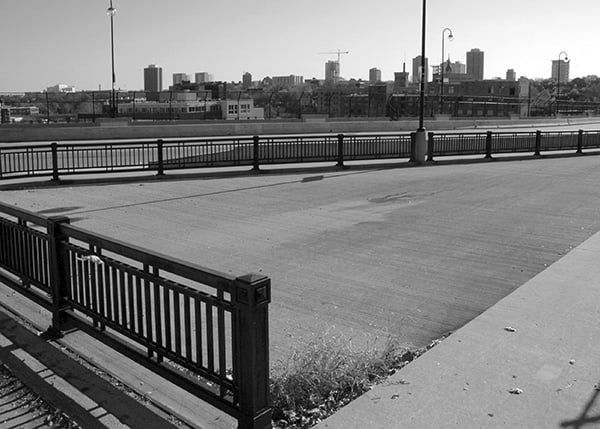
Blue Dress Park.
Photo: Courtesy of Paul Druecke.
Sales of the porter will go to Friends of Blue Dress Park, a small artist-run organization dedicated to supporting a small, undistinguished patch of concrete that artist Paul Druecke reimagined as a public park/conceptual art project back in 2000.
The pilsner is named for and inspired by the Poor Farm in Little Wolf, Wisconsin. The organization was founded by the husband and wife team of artists Brad Killam and Michelle Grabner, and hosts year-long art exhibitions at a historic 1876 farmhouse.
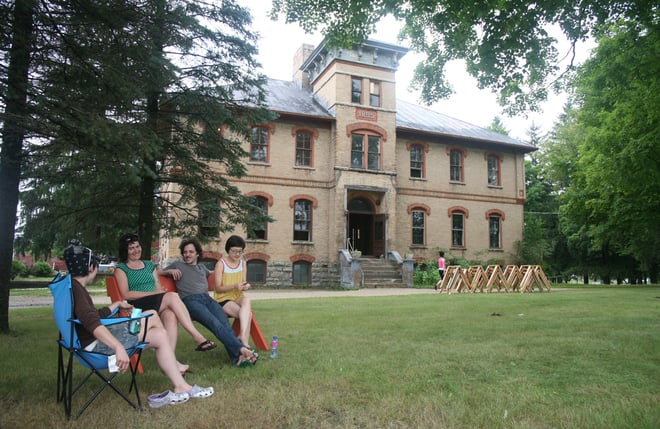
Poor Farm.
Photo: Courtesy of Mary Louise Schumacher via Journal Sentinel.
The Beer Endowment’s beginnings go back to 2004, when Riepenhoff launched the Green Gallery.
For the first few openings, Riepenhoff brewed all the beer himself, in small five-gallon batches, but it soon became too much for him to manage on his own. “I put the beer on the back burner,” he admitted.
In the decade or so that followed, Riepenhoff always hoped to return to the craft, but it he’s only now gotten the chance, thanks to funding from Milwaukee’s Mary Nohl Foundation, the NEWaukee advertising agency, and the Milwaukee Arts Board, which named him artist of the year.
“I was trying to make my favorite beer, the beer I was most interested in drinking,” Riepenhoff explained. It’s a historically-based IPA that is inspired by beer imbibed during the East Indian spice trade’s heyday—”not super hoppy like the American IPAs.”
Creating custom brews for Blue Dress Park and Poor Farm was a collaborative effort. Riepenhoff sat down with the leaders of both organizations for brainstorming sessions that he likened to “an ad agency sitting down with a client and asking ‘what’s your brand identity?'”
Together, they worked to come up with beers that would be reflective of their respective identities and histories, and would give people a reason to gather, and hopefully learn about these artist-run institutions.
Poor Farm is a kunsthall, and has done some programming in Hamburg, Germany, so “we designed a really clean northern German beer,” said Riepenhoff. Typical American pilsners, he insisted, “don’t have the crispness and the purity pilsners have.”
For his part, Killam had in mind the annual Great Poor Farm Experiment Weekend, where, he told artnet News, “beer is the number one drink of choice—it’s a very Wisconsin thing.”
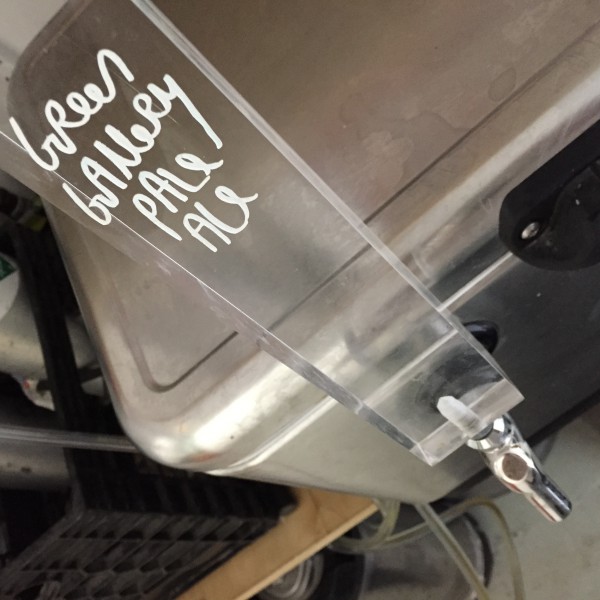
The Green Gallery Pale Ale.
Photo: Courtesy of John Riepenhoff.
The porter is actually somewhat of a misnomer, and is technically more of an English mild beer, a variety popular in early stages of the Industrial Revolution. Riepenhoff sees this elevation of the humble people’s beer into a rich porter as a metaphor for how artists have transformed a little slab of concrete into something so much more.
“If we suggest that the English mild is actually a porter, it changes the way you taste it and experience it,” he explained. “It’s that power of suggestion and imagination.”
While each beer is meant to convey a story, taste is just as important to Riepenhoff. “A big priority for me is our experience of and enjoyment of the beer itself.”
To that end, he’s worked closely with a beer judge, Mike Mikulay, to develop the recipes, as well as Company Brewing’s head brewer, George Bregar.
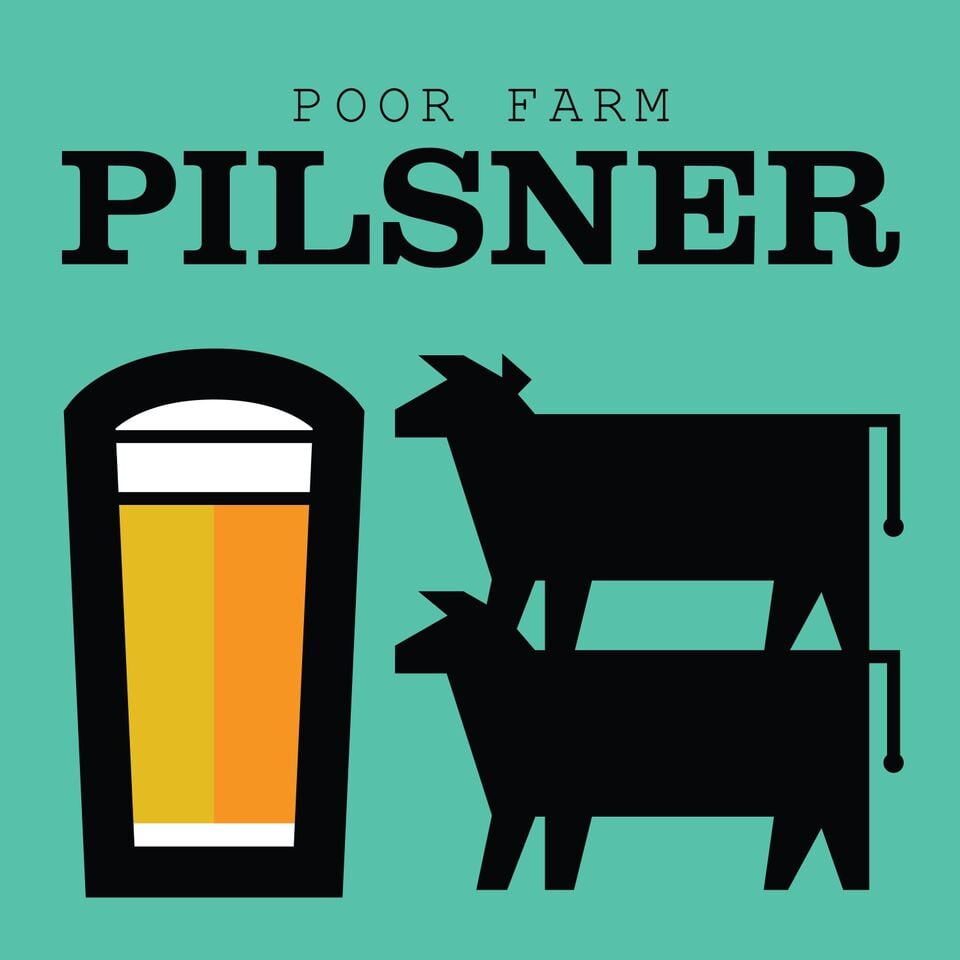
Poor Farm Pilsner.
Photo: Courtesy of Nate Pyper.
Sometimes, Riepenhoff’s vision for a beer is quite ambitious, but the experts make it all possible. For an upcoming show he’s curating at the University of Wisconsin’s INOVA gallery, for instance, Riepenhoff wanted to invoke the exhibition’s international nature with his own take on a universal lager—the Heinekens and Tiger Beers of the world—but with a twist.
“Do you think this is possible, to make a beer that tastes like almost nothing when you’re first drinking it but then gets more complex after you’re finished?” he asked Bregar.
The result is a beer that functions much like conceptual art, that at first glance “seems really familiar and unspectacular,” but reveals its many layers upon examination.
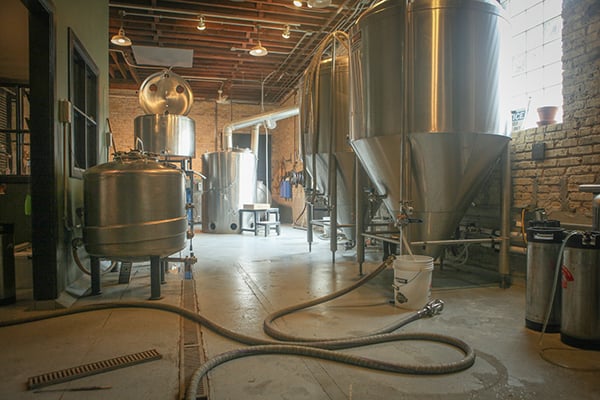
Company Brewing.
Photo: Courtesy of Trevor Shorey.
More custom brews are hopefully forthcoming, for Milwaukee’s Microlights Cinema and ACRE, an artist residency program in Steuben, Wisconsin. Within five years, Riepenhoff wants to expand distribution to New York and Los Angeles, offering canned beer at supermarkets.
artnet News suggested a marketing tactic to Riepenhoff: Bring on Will Ferrell, who in 2011 mysteriously filmed series of delightfully retro Old Milwaukee commercials. “If we could get Will on board with something that would be amazing!” Riepenhoff exclaimed.
For now, the Beer Endowment is looking forward to its premiere with a concert and party at Company Brewing on July 30.